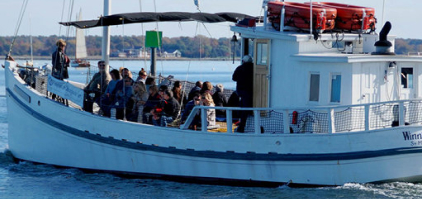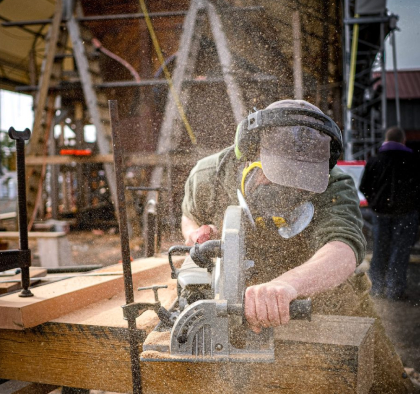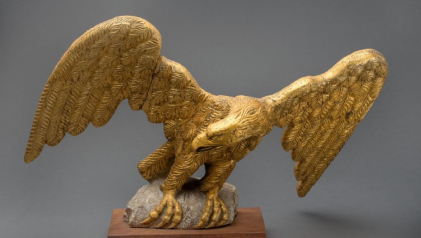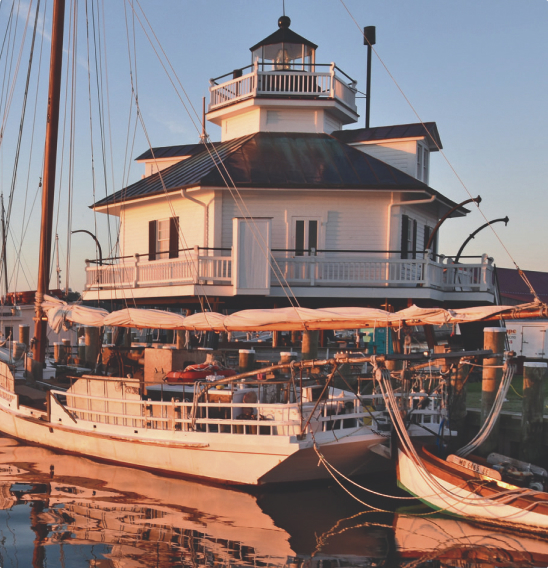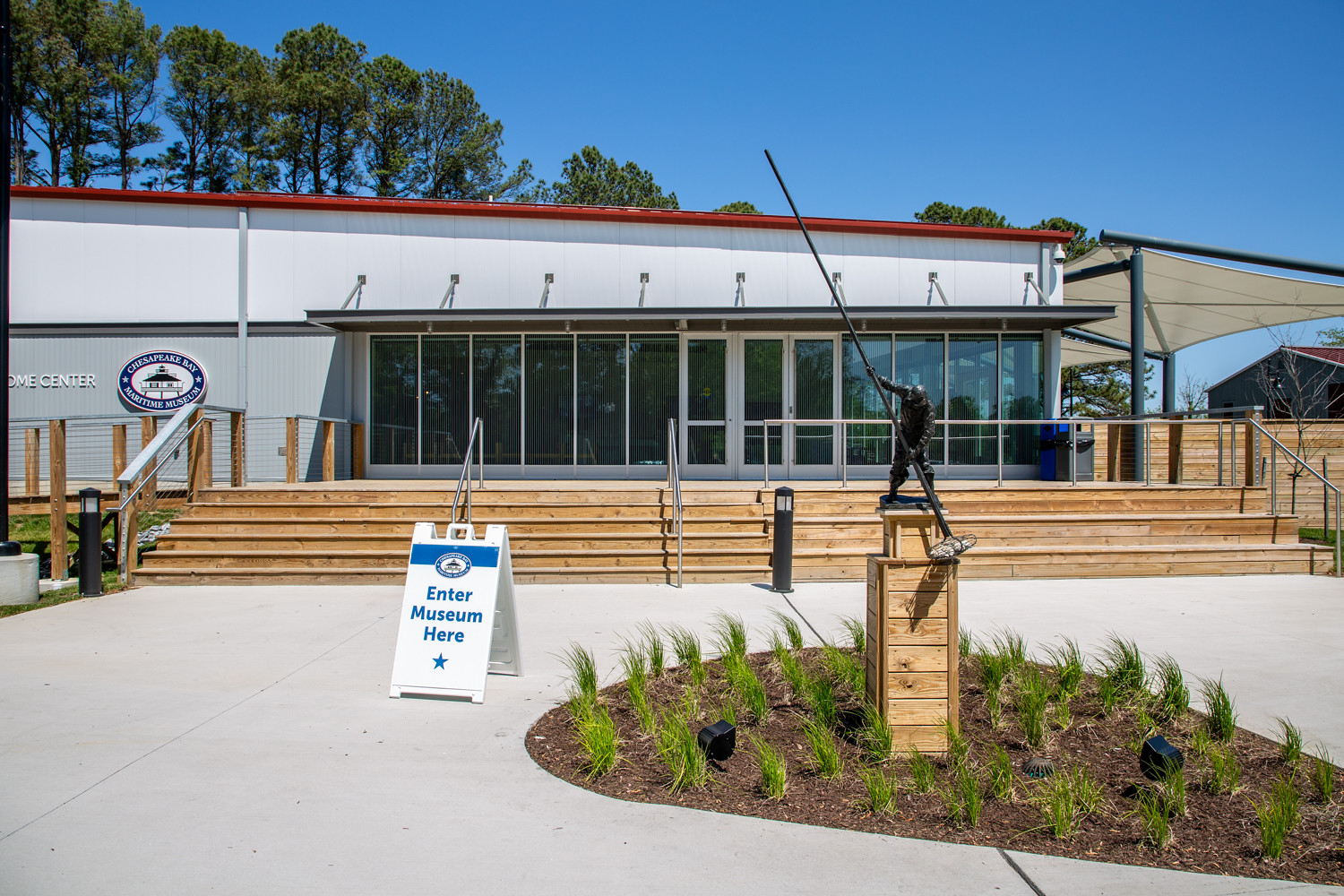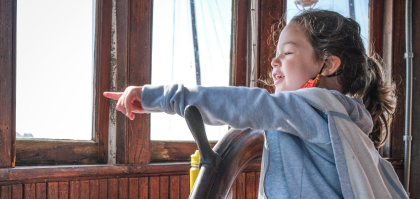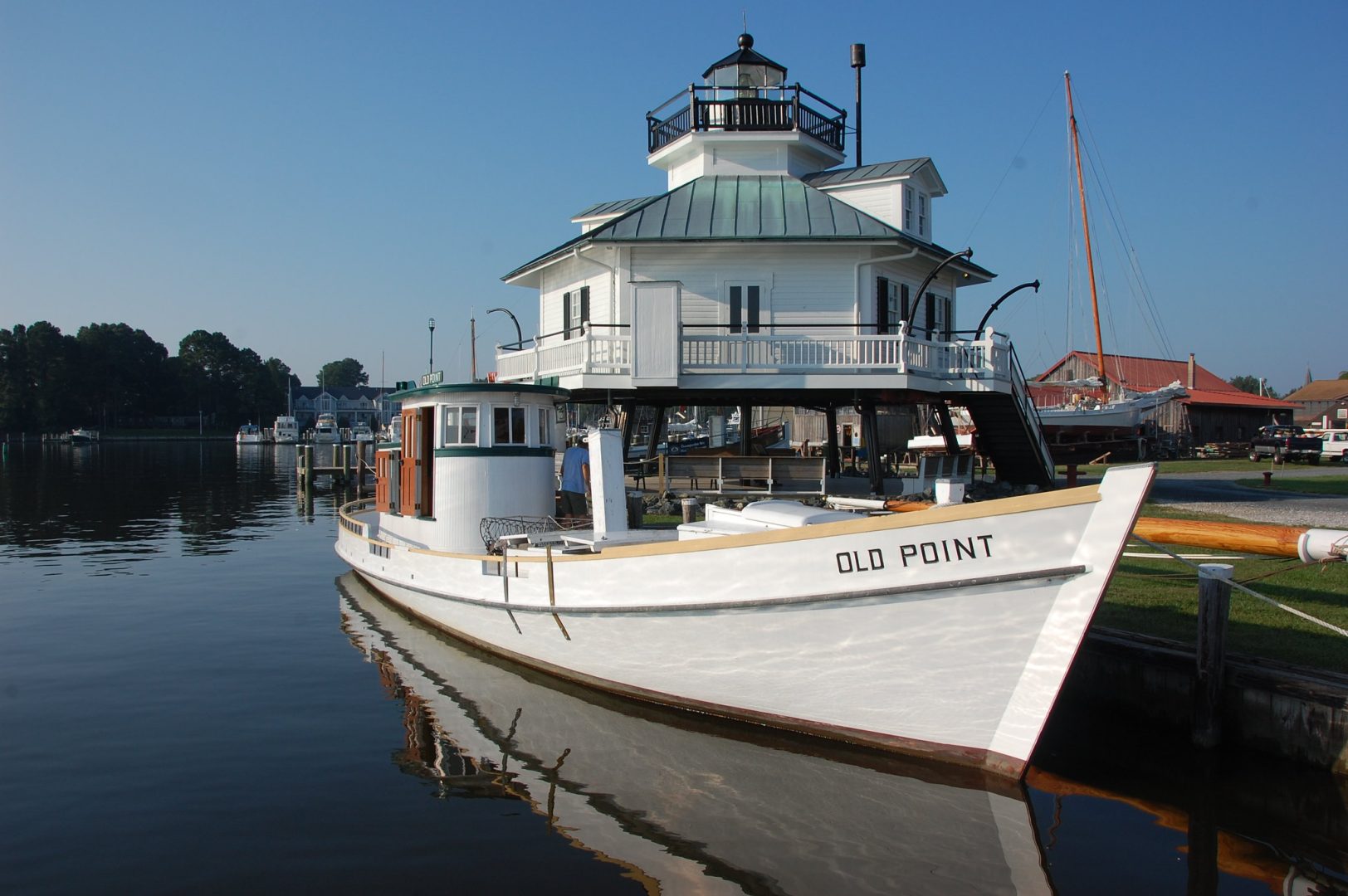Through interpretive exhibitions, CBMM seeks to capture the essence of the Chesapeake Bay story, the connections between the environment and people over time, how a place where land is intricately intertwined with water has impacted individual lives and communities throughout history. Grounded in a sense of place and connection to the Chesapeake’s culture, land, and water, CBMM’s guests better understand the history, environment, and culture of the region and are inspired to act as stewards for the Bay and its cultural and environmental resources.
At the heart of our exhibitions is the interconnectedness of people, place, and purpose, expressed through five central interpretive themes and concepts:
- The Chesapeake Bay as a source of inspiration and identity
- The Chesapeake Bay as an intersection of tradition and innovation
- The Chesapeake Bay as a maritime highway and barrier
- The Chesapeake Bay as a habitat and resource
- The Chesapeake Bay as an evolving community
CBMM’s long-term and special exhibitions are built upon these interpretive goals, examining a wide range of themes that explore the Chesapeake’s boatbuilding traditions and watercraft, the seafood industry, recreational boating, lighthouses and maritime navigation, and unique world-class collections of objects, art and photography, as well as stories examining the experiences of individuals, groups and communities along the Bay.
Learn more about CBMM’s historic floating fleet as well as our long-term, current and upcoming special exhibitions. Descriptions of our past exhibitions can be found below.
CBMM’s Waterfowling on the Chesapeake exhibition closed in April 2024 ahead of the opening of the new Stories from the Shoreline exhibition in the Welcome Center, which will orient guests for their CBMM experience by providing a sense of place, highlighting changes to the environment and landscape, and exploring how humans interacted with the land and the water over time through waterfowling, crabbing, fishing and trapping, along with cultural and recreational activities including birding, kayaking, religious ceremonies and community celebrations at the water’s edge.
The Chesapeake Bay is the site of one of the world’s great bird migrations. Each spring and fall, hundreds of thousands of geese, ducks, shorebirds, and songbirds find refuge along the Bay’s marshy shoreline. This abundance has created distinct cultures of market gunners, outlaws, hunters, birdwatchers, and collectors.
The Waterfowling exhibition shared why the Bay attracts hundreds of thousands of birds each year and how these migrating flocks influence the sport, industry, and art of waterfowling. It also featured the most comprehensive public collection of working decoys from the Mid-Atlantic region.
Waterfowling began with market gunning and outlaw gunners who devised ingenious ways of hunting and getting around conservation laws. In the nineteenth and early twentieth centuries, Chesapeake waterfowl was served at elite hotels and men’s clubs in cities along the eastern seaboard. The exhibition also explored the world of decoys. With origins in Indigenous culture, the decoy is truly an American art form. The various schools of Chesapeake decoy carving are represented, along with plastic and factory-made decoys, which led to the evolution of decoy carving into a folk art that has produced the beautiful and life-like decorative decoys popular today.
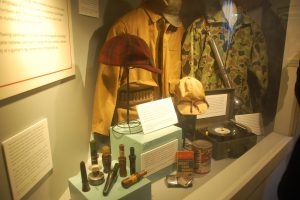
Hunting attire on display.
Although steeped in cultural ideas of tradition, the Chesapeake long has been a place of change and evolution and its history driven by response to that change.
For this exhibition, artists were asked to reflect on how climate change and the impact of humans on the environment shapes their Chesapeake community, how the way they identify with and are inspired by the Chesapeake has evolved, what they would want someone 100 years from now to know about life and community traditions in the Chesapeake, and their vision for the future of life in the region.
The Changing Chesapeake invited guests to explore the perspectives of artists from across Maryland and surrounding areas. The more than 75 works were selected through a community panelist review process and include traditional media such as photography and painting, as well as stop-motion animation, found-object art, quilting, original songwriting, embroidery, poetry, and sculpture.
“Our concept for The Changing Chesapeake was to break down barriers and encourage artists of all types and experience levels to find their voice, share their personal histories, passions, fears, and hopes, and convey how the Chesapeake shapes and is shaped by individual and community identities,” Director of Curatorial Affairs & Exhibitions Jen Dolde said. “These artworks document how cultural traditions are evolving and transforming in an era of dynamic change. They are a human response to environmental, economic, and internal and external factors that often seem beyond our control.”
The Changing Chesapeake was presented with support from CBMM’s Regional Folklife Center under the Maryland Traditions program of the Maryland State Arts Council and Glenmede. You can search the exhibition through the online collections portal here.
Informed by his training as an environmentalist and inspired by his passion for the beauty and wildness of the natural world, photographer and filmmaker Michael O. Snyder’s works explore the effects of climate change on the Chesapeake Bay region and beyond. Images from Snyder’s Eroding Edges and The Coming Coast series confront the impact of environmental change on both landscape and culture and will be exhibited in a traditional gallery setting indoors and outdoors on CBMM’s campus.
Michael O. Snyder’s documentary work is funded through: The Bertha Foundation, Climate Central, National Geographic, The Blue Earth Alliance, The Arctic Institute, and The National Trust for Historic Preservation.
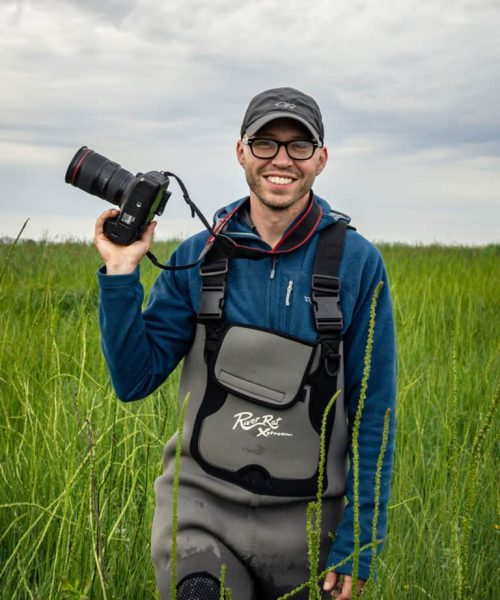
In 1978, Dorchester County’s Jim Richardson and a team of young workers completed Maryland Dove, a representation of the vessel that escorted colonists to the province in 1634. As the Chesapeake Bay Maritime Museum’s working Shipyard completes the new Maryland Dove in 2022, curatorial staff will draw from CBMM’s oral history archive and new interviews with the 1970s boatbuilders.
Dove Tales will explore how the various iterations of the ship have served as important interpretive tools, connecting Marylanders with the state’s early history and with boatbuilding as a living historical tradition in the Chesapeake region. In many ways, the current Maryland Dove project builds upon Richardson’s project to pay homage to the traditional work of Chesapeake boatbuilders.
Dove Tales is funded through CBMM’s Regional Folklife Center under the Maryland Traditions program of the Maryland State Arts Council, and is generously sponsored, in part, by Shore United Bank, Wye Financial Partners, and PNC Bank.
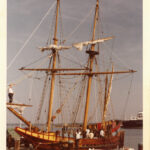
Works by photographer Jay Fleming reveal how the changing environment is affecting the cultures and shorelines of inhabited and formerly inhabited offshore islands in the Chesapeake in Island Life: Changing Culture, Changing Shorelines.
Fleming discovered his passion for photography upon inheriting his father, former National Geographic photographer, Kevin, hand-me-down Nikon film camera at the age of 13. He immediately developed an affinity to looking at life through the lens of his camera and what ensued was an exciting photographic journey that would eventually lead him to his career as a professional photographer. His first book, Working the Water—a photographic narrative of the Chesapeake Bay seafood industry—is in its third printing and Island Life was released last fall.
Originally planned for a 2020 opening, CBMM instead hosted a virtual exhibition of these works at cbmmislandlife.org and will now install 15 of them onsite.
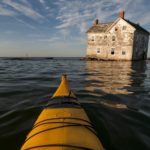
Chesapeake Bay-area craftsmen produced boats—and decoys—that were regionally distinctive. Boatbuilding was often a full-time occupation, and decoy carving was more typically a sideline. A few boatbuilders, used the same carpentry skills to produce both boats and decoys. From the prolific decoy carvers of the Susquehanna Flats at the northern end of the Bay, to carvers whose production was much more limited, some of the Chesapeake’s most shapely decoys came from the hands of carvers who made their principal living building watercraft for fishermen, hunters, or boaters.

On the heels of the American Society of Marine Artists’ 40th anniversary, the ASMA biennial exhibition is a juried selection of paintings, drawings, sculptures, scrimshaw, and hand-pulled prints submitted by members. The ASMA 18th National Exhibition will include work by many of the most prominent contemporary marine artists working in the nation today. Click here for more on ASMA.
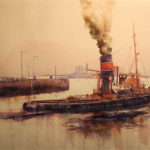
Forty years of images by documentary photographer David W. Harp were on display at the Chesapeake Bay Maritime Museum in an exhibition titled Where Land and Water Meet: The Chesapeake Bay Photography of David W. Harp. Harp’s inspiration comes from exploring literal and figurative edges: shorelines, communities, habitats, and traditional worklife where culture and nature connect, creating the essence of what defines the Chesapeake.
This exhibition is presented thanks to the generous contributions of Diamond Sponsor Caroline Gabel; Platinum Sponsors Sandy & Omer Brown and H. Turney McKnight; Gold Sponsors Emma & Cullen Bailine and Finn & Jackson Falk, Bob Baugh, Meta & William Boyd, David M. Brown, Dorie & Jeff McGuiness, and The Bay Journal; Silver Sponsors Posey & Bill Boicourt and Susan Russell & William Thompson; and Bronze Sponsors Marty & Al Sikes.

On Land and On Sea: A Century of Women in the Rosenfeld Collection features the work of Morris and Stanley Rosenfeld who created the world’s largest and most significant collection of maritime photography with more than 1 million images that are owned and curated by Mystic Seaport. The Rosenfelds’ iconic images are recognizable to the general public and treasured by boating enthusiasts. The exhibition includes images selected by Margaret L. Andersen Rosenfeld, the daughter-in-law of Stanley Rosenfeld, a recognized academic and University of Delaware Sociology professor Emeritus who currently resides in Oxford, Md. Drawing upon her scholarship, On Land and On Sea reveals the social and historical context of women over the better part of the 20th century through the lens of Rosenfeld photos.

What makes a decoy “collectible”? How do you distinguish a Susquehanna Flats duck from a Chincoteague carvers’ work? Buying and selling carved and painted wooden waterfowl—once used simply as tools for hunting—evolved from a simple interest in and admiration for folk art to a distinct collecting field with an established market. Deconstructing Decoys will explore varying perspectives about decoys as art and will help guests understand how collectors “read” a decoy to determine its maker, its history, and its significance. Today, the number of casual collectors and savvy connoisseurs who attend swaps, shows, and sales may very well exceed the number of gunners who venture into blinds on icy winter mornings, transforming the role of waterfowling within Chesapeake Bay culture.

Beach Finds of the Chesapeake explores a sampling of the different types of finds discovered by those who seek to preserve the history of our region by collecting fragments of its past. From shark teeth and other 20-million-year-old Miocene-era fossils, through Victorian doll parts and marbles, to modern plastic toys and marine debris found today, the Chesapeake Bay holds history, treasures and trash alike to be discovered by beachcombers who search its disappearing shorelines.
The exhibition is organized by the Sea Glass Center, a non-profit organization preserving and presenting the historical, artistic, and cultural significance of sea glass through education. The special exhibition kicks off the April 6 & 7 Eastern Shore Sea Glass & Coastal Arts Festival, which has been moved this year from St. Michaels’ Mill district to CBMM’s waterfront campus. (Photo: Mary T. McCarthy)
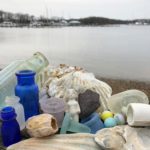
Exploring the Chesapeake: Mapping the Bay looks at the different ways the Chesapeake Bay has been portrayed over time through mapping and charting, beginning with European exploration in the 16th century and continuing with the growth of settlement in the region in the 17th and 18th centuries. Scientific surveying methods brought improved accuracy in the 19th century, and special purpose maps (railroad maps, tourist guides) proliferated in the 20th century. More recent decades have introduced satellite imagery, geographic information systems, and Google maps, which continue to change how we view and understand this special region. The exhibition will present changes in maps over time as an expression of what people were seeking in the Chesapeake: natural resources, transportation, and more. This exhibition is generously sponsored by Ellen and Norman Plummer, the Maryland State Arts Council, and is funded in part by a grant from the Talbot County Arts Council, with revenues provided by the Maryland State Arts Council, Talbot County, and the Towns of Easton, Oxford and St Michaels.
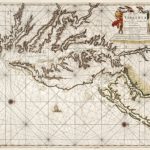
The exhibition shares the stories of Maryland’s Kent County carvers and hunting clubs through a collection of decoys, oral histories, historic photographs, and other artifacts.
Cradled by the Chester River and the Chesapeake Bay, Kent County’s rich environment has fostered a long tradition of waterfowl guiding, gunning clubs, and decoy carving. Carvers like John Glenn, the Uries, and Charlie Joiner created unique rigs that were commissioned and gunned over on secluded Kent County coves teeming with waterfowl. Since the late 1800’s, the superior shooting of the county’s waterfront estates attracted well-heeled sportsmen to exclusive gunning clubs, where skilled local guides provided a great day’s take. Through objects, images, and selected decoys, Guides, Gunning Clubs and Co-Ops explores Kent County’s enduring waterfowling culture—one that continues to flourish in the fields, necks and islands of the deeply-rural region.
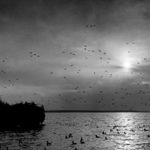
CBMM shipwrights and apprentices are restoring CBMM’s queen of the fleet and National Historic Landmark Edna Lockwood by replacing her nine-log hull, in adherence to the Secretary of the Interior’s Standards for Historic Vessel Preservation. All work takes place in full public view at CBMM’s waterfront campus in St. Michaels, Md., now through 2018.
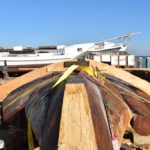
Bob Grieser (1946 – 2017) was a photojournalist who worked for the Indianapolis Star, Washington Star, Los Angeles Times, and Chesapeake Bay Magazine. He covered yacht racing events and sailing in waters around the globe including the America’s Cup, Louis Vuitton Cup, and Heineken Regatta. In 1990, Grieser published Chesapeake Bay, an art book featuring his black-and-white photography. An exhibition entitled Capturing the Spirit of the Chesapeake Bay, drawn in part from the photographs in his book, toured to museums from St. Michaels to San Diego in the following years. In 2004, Chesapeake Bay Maritime Museum commissioned Grieser to photograph scenes from around the region for its exhibition At Play on the Bay. This exhibition features 15 photographs selected from Grieser’s earlier exhibition, Capturing the Spirit.

Robert de Gast’s photographs of the late 1960’s and 70’s documented the Chesapeake’s oystering industry, shorelines, and lighthouses at a watershed moment, both for the Bay and for photography. Deftly incorporating modern abstract elements into images that conveyed grit, humor, and atmosphere, de Gast masterfully represented the last days of the Chesapeake’s maritime golden age. This exhibition features masterpieces selected from more than 10,000 images in CBMM’s de Gast collections.
Robert de Gast’s Chesapeake is made possible through the generous support of Mr. & Mrs. Norman H. Plummer, Anne & Frank Mickey, Maryland State Arts Council, Ashton Design, and Elizabeth C. Moose.
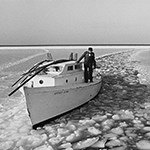
Potomac Waterfowling: Gunning the Nation’s River follows the harvesting history from 18th century statesmen like George Washington—who wrote about memorable hunts of the Potomac’s stunning numbers of waterfowl—to the 20th century, when the combination of Washington, D.C.’s growing economy and the rich Potomac environment spurred both commercial and sport markets for waterfowl.
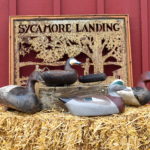
In 2016, CBMM is opening an exhibition all about you! Your personal photos and family memories from the last 50 summers on the Bay—fishing, sailing, lounging on the beach, catching crabs—will be displayed for the public to enjoy as part of a new exhibition, Snapshots to Selfies: 50 Years of Chesapeake Summers.

The 17th National Exhibition of the American Society of Marine Artists is coming to Maryland’s Eastern Shore, with the exhibition jointly hosted at the Chesapeake Bay Maritime Museum in St. Michaels and the Academy Art Museum in Easton. The exhibition opens to the public at both venues on December 10, 2016, and continues through April 2, 2017, with private donor preview receptions scheduled for December 8 at CBMM and December 9 at AAM.
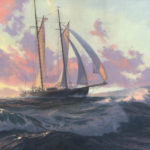
This exhibition displays the works of local photographer Morris Ellison, as he showcases the Chesapeake Bay’s iconic sailing log canoes. Ellison prints some of his canoe photos in sepia tone, giving them the feel of an old photograph, which he feels conveys a timeless quality to the classic log canoes.

With artifacts ranging from gilded eagles to a sailmaker’s sewing machine, a log-built bugeye to an intimate scene of crabpickers, A Broad Reach: 50 Years of Collecting is a new major exhibition of the Chesapeake Bay Maritime Museum that opened on Saturday, May 23, 2015, when the museum hosted a festival to kick off its year-long 50th anniversary celebration with Party on the Point: Celebrating 50 Years on the Bay.
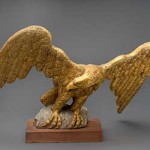
The transformation of Chesapeake waterfowling gear, tools, and clothing over the last 100 years will be explored through artifacts, advertising ephemera, and photographs in a new exhibition. Chesapeake Ammo, Camo and Calls explores the fact that waterfowling is not just about decoys. A gunner needs a whole field kit of gear and tools-from clothing to guns, ammunition to duck and goose calls-to have a successful day in the field. Over the last 100 years, these waterfowling essentials have transformed from simple to sophisticated, reflecting innovation in firearm technology, camouflage development, and the ongoing search for an ever-more-persuasive call. Though today’s gear is more advanced in form, the function remains the same-to mimic the Chesapeake marshes, call in waterfowl on the wing, and finally get the perfect shot.Chesapeake Ammo, Camo and Calls is generously sponsored by Judy and Henry Stansbury, and the world’s leading decoy auction firm, Guyette & Deeter.
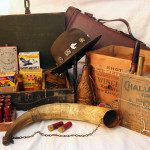
An exhibition tracing the design and construction of the distinctive Trumpy wooden yachts opens August 6 and focuses its attention from 1909 through 1973, when the Trumpy Yacht Yard in Annapolis, Md. produced its last boat. Named after John Trumpy Sr., the famous Naval architect and designer who crafted these regal vessels, Trumpy boats are legendary for their display of affluence, craftsmanship, and beautiful design.
A Single Goal—The Art of Trumpy Yacht Building at the Chesapeake Bay Maritime Museum is made possible by the generous support of Dr. Jacob Deegan, Maryland State Arts Council, and the Talbot County Arts Council, with revenues provided by the Maryland State Arts Council, Talbot County, and the Towns of Easton, Oxford and St Michaels.
Using models, paintings, historic photographs, artifacts such as wooden patterns and vintage signage and original drawings by John Trumpy, Sr., A Single Goal explores the detailed process of wooden boat building as an art form and highlights these distinctive yachts and their furnishings and finishings.
Read a September 2016 TripAdvisor review about the Trumpy exhibition here.
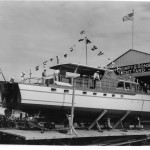
Photographer H. Robins “Bob” Hollyday (1898-1981) documented Eastern Shore people and places from land, water, and air through much of the 20th century. Beginning in 1929, Hollyday teamed with Talbot County’s most well-known aviator, Malcolm Hathaway, to fly the skies over the county. Hollyday would hang out of the open cockpit plane with a large, cumbersome camera to take photographs. Hollyday photographed properties from the air for the area’s realtors, captured events for local business and society, and documented the region’s culture. His photographs reflect a distinct sense of place, and in Talbot County, which claims 600 miles of shoreline, that character is closely intertwined with the water. In these images, Hollyday documented the area’s waterborne transportation and recreation, waterside industry, and fisheries.Robins Hollyday’s extensive photograph collection is preserved by the Talbot Historical Society in Easton, Maryland, which created this exhibition.
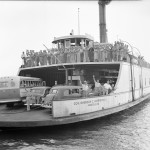
The story of the evolving relationship between the people and swans of the Chesapeake Bay will be told through a curated collection of decoys, photographs, and artifacts in this new exhibition.The exhibition is generously sponsored by Guyette & Deeter—the world’s leading decoy auction firm—Judy and Henry Stansbury, and Gourmet by the Bay in St. Michaels, Md.

Explore the impact of the War of 1812 on the people of the Chesapeake, black and white Americans, militiamen, Baltimore merchants, and British sailors who found opportunity and misfortune amid the conflict. This online exhibition features stories, artwork, and rare relics of the period.

